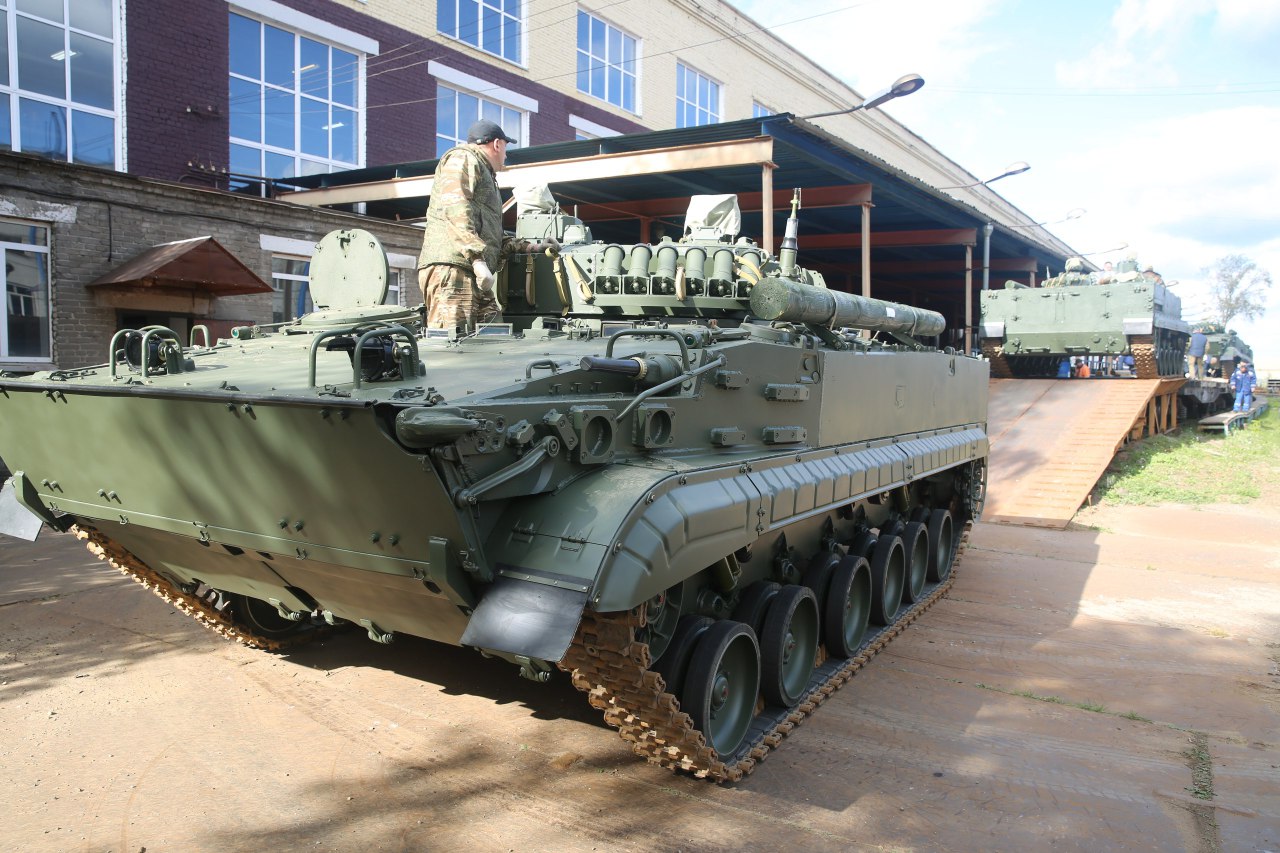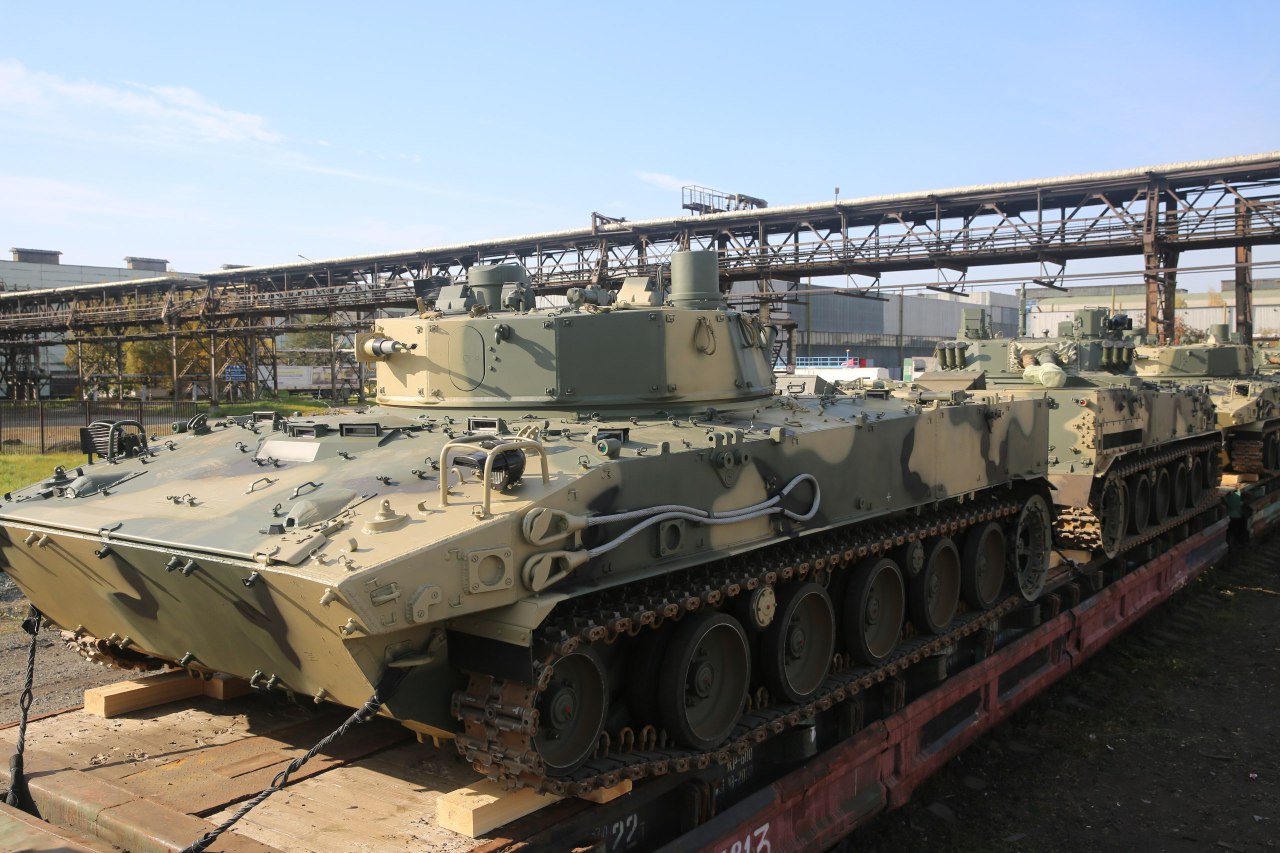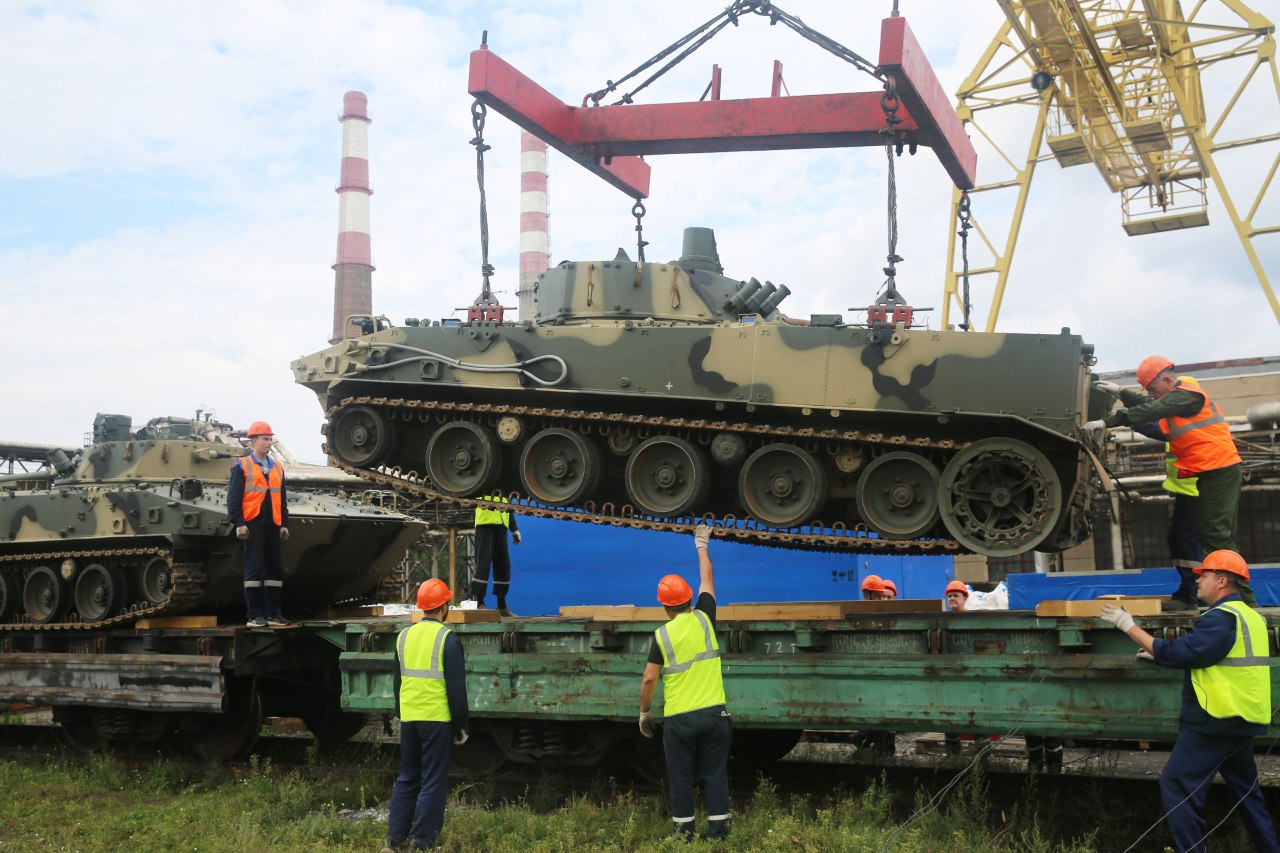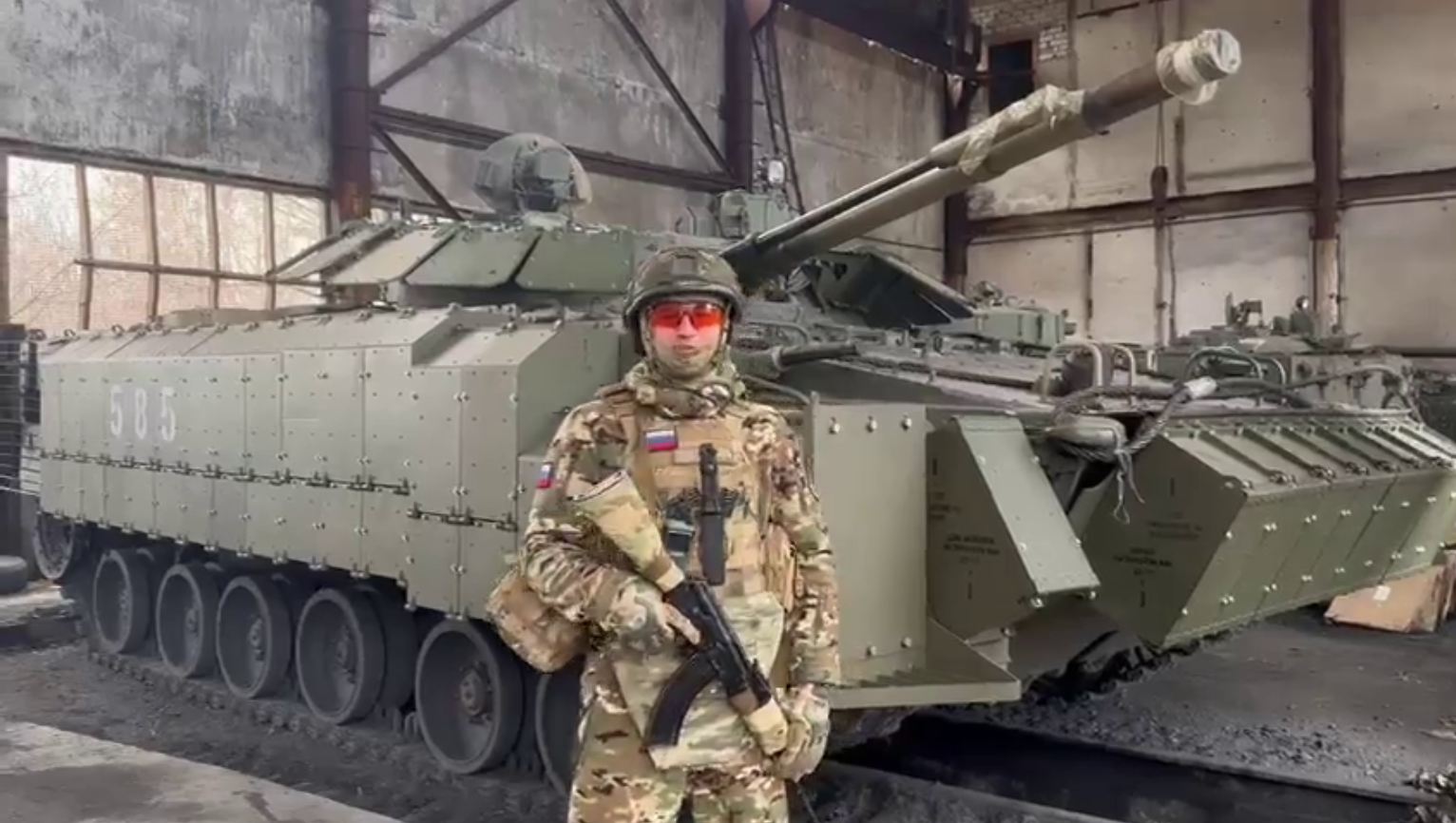Russian Army receives new BMP-3 and BMD-4M
8 October, 2024 New BMP-3 and BMD-4M for the Russian army. October 2024. Photo: JSC Kurganmashzavod
The Russian army has received a batch of new BMP-3 infantry fighting vehicles and BMD-4M airborne fighting vehicles. JSC Kurganmashzavod shipped the new armored vehicles. The published photos capture the armored vehicles being loaded onto trains for further transportation to military units.
The delivered combat vehicles are equipped with additional protection kits, including armor reinforcement and mounted slat armor.
 New BMP-3 for the Russian military. October 2024. Photo: JSC Kurganmashzavod
New BMP-3 for the Russian military. October 2024. Photo: JSC Kurganmashzavod
These kits are supposed to protect BMP-3 and BMD-4M from attacks by strike drones and also cover the sides from damage by shaped charge munitions.
Additional mounted protection, such as armor shields and slat armor, is supplied with the vehicles and mounted directly in Russian army units.
 New BMP-3 for the Russian army. October 2024. Photo: JSC Kurganmashzavod
New BMP-3 for the Russian army. October 2024. Photo: JSC Kurganmashzavod
The combat vehicles were also fitted with Nakidka RAM camouflage, which allegedly reduced their visibility in the thermal and radar spectrum.
In addition, Kurganmashzavod said that in the first nine months of this year, it increased production of BMPs and BMDs by 20% compared to the same period last year. Some of the company's workshops work around the clock to fulfill the aggressor state's state defense order.
 The batch of BMP-3 for the Russian military. August 2024.
The batch of BMP-3 for the Russian military. August 2024.
Photo: JS? Kurganmashzavod
This year, in particular, the company is fulfilling additional obligations to supply the Russian Army with BMP-3s in quantities beyond those outlined in the schedule.
 BMD-4M of the Russian army. August, 2024.
BMD-4M of the Russian army. August, 2024.
Photo: JSC Kurganmashzavod
The previous batch of new BMP-3 and BMD-4M was delivered to the Russian army in late August. The first batch of BMP-3 infantry fighting vehicles in 2024 was delivered in February.
 Russian BMP-3 with 4S24 "Cactus" ERA kits. April 2024
Russian BMP-3 with 4S24 "Cactus" ERA kits. April 2024
This spring, the Russian invaders were spotted using a BMP-3 infantry fighting vehicle with a Cactus reactive armor kit.
It should significantly increase the chances of survival of Russian light armored vehicles from Ukrainian strike drones, massively used on the front line.